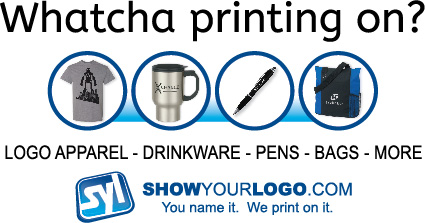The Pantone Matching System color chart is a very important tool in the promotional products world. “Cub Blue” and “Iowa Yellow” may be very obvious colors in the heads of us Midwesterners, but what are the chances that a printer in California has the slightest clue what “Iowa Yellow” looks like? What are the chances of getting an exact color match to your logo or to “Cub Blue” or to “Iowa Yellow” without the Pantone Matching System? Slim to none! The Pantone Matching System, or PMS for short, was developed exactly for these types of issues. The system was developed back in the 50’s by Lawrence Herbert. It really seems like Herbert was light years ahead of his time, but seriously…why didn’t anyone think up the PMS system sooner? Printing has been around for hundreds of years. It took until 1956 from someone to help standardize color! In today’s world where everyone needs their t-shirts yesterday, no one has time to wait for a sample color to be mailed back and forth for approval. Show Your Logo, Inc. can print pens in 24 hours, but that wouldn’t be possible if we couldn’t get accurate colors to the printer quickly. With the help of a PMS color a printer in California can be told to print in PMS 116 (that would be “Iowa Yellow”), and everyone involved knows what that means. With that PMS number the printer knows the exact specifications to make that color. The end user knows exactly what color to expect on their finished order.
PMS colors are used in more ways than just determining what color ink to print. They are also being used to give a more accurate representation of the item the imprint is going on. Gildan and other t-shirt suppliers to the promotional products industry have started giving out the PMS color for their shirt colors. What does Berry look like? Does it look like blackberries, blueberries, or strawberries? Gildan, with the help of this chart, has given us a PMS color to reference, PMS 683. Looking up the color below we can see that is a deep purple, but then again what is deep purple? Look up PMS 683 below and you can determine what to call that color. There are certain items that we can even PMS color match the entire product. Do you want a custom silicone bracelet in PMS 360? No problem! Want an imprinted lanyard in PMS 5285? Done. The use of PMS colors in labeling item colors have helped to expand our color selection from black, white, red, and blue to iris, cornsilk, moss, and sapphire.Ensuring consistent colors is one of the core pieces in a good marketing campaign. Most companies, schools, and organizations want all of their t-shirts, mugs, pens, tote bags, water bottles, and so on to be printed with the exact same imprint color on the exact same background color. Everyone knows when the brown truck pulls that UPS is there with a delivery. (A delivery of custom mugs from Show Your Logo, I hope!) UPS has done such a great job with sticking with their color, PMS 476. Even their employees are decked out in PMS 476! There are so many companies that are known for their colors IBM (big blue), Coke (red), Pepsi (blue). These companies and many more are able to keep their branding consistent with the use of PMS colors.The system does have its limitations. What you see on this screen is a useful tool, but it is not an exact match to the printed colors. Every monitor brand and model may display colors slightly differently. Pantone is the only company that prints their PMS books so everyone can match their colors. They do this so they can ensure every color in every book is printed correctly. Please use the color chart as a guide, but you should consult the printed PMS color book to ensure an exact color match.
This chart is intended as a reference guide only! PANTONE Computer Video simulations displayed may not exactly match PANTONE®-identified color standards. Use current PANTONE Color Publications for most accurate color.



